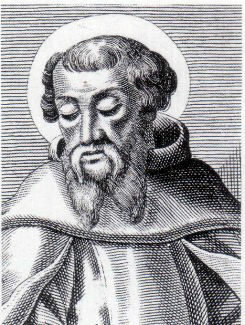Christianity in the ante-Nicene period







History of Christianity before the First Council of Nicaea
Christianity in the ante-Nicene period
Christianity in the ante-Nicene period refers to the history of Christianity from the end of the Apostolic Age (c. 100 AD) to the First Council of Nicaea in 325 AD. This period is characterized by the development of early Christian theology, the establishment of church structures, and the spread of Christianity throughout the Roman Empire and beyond.
Historical Context[edit]
The ante-Nicene period saw the transition of Christianity from a small Jewish sect to a widespread religion. The Roman Empire provided a relatively stable environment that facilitated the spread of Christian ideas through its extensive network of roads and cities. However, Christians also faced periods of persecution, notably under emperors such as Nero, Domitian, and Diocletian.
Theological Development[edit]
During this period, early Christian theology began to take shape. Key theological debates included the nature of Jesus Christ, the Trinity, and the relationship between the Old Testament and the New Testament. Important theological figures included Justin Martyr, Irenaeus, Tertullian, and Origen.
Christology[edit]
Christology, the study of the nature and work of Jesus Christ, was a central focus of ante-Nicene theology. Early Christians debated whether Jesus was divine, human, or both, leading to various Christological positions. The Arian controversy, which questioned the divinity of Jesus, began in this period and would later be addressed at the First Council of Nicaea.
Trinitarian Doctrine[edit]
The concept of the Trinity—the Father, the Son, and the Holy Spirit—was also developed during this time. Early theologians like Tertullian contributed to the formulation of Trinitarian doctrine, although it would not be fully defined until the Nicene Creed.
Church Structure[edit]
The structure of the early Christian church evolved significantly during the ante-Nicene period. Initially, Christian communities were led by bishops, presbyters, and deacons. Over time, the role of the bishop became more prominent, leading to a hierarchical structure that included metropolitan bishops and patriarchs.
Spread of Christianity[edit]
Christianity spread rapidly throughout the Roman Empire and into regions such as North Africa, Asia Minor, and the Middle East. Missionary efforts, along with the translation of Christian texts into various languages, facilitated this expansion. Key centers of early Christianity included Rome, Alexandria, Antioch, and Jerusalem.
Persecution[edit]
Christians faced intermittent persecution during the ante-Nicene period. Persecutions were often localized and varied in intensity. Notable persecutions occurred under emperors such as Nero, who blamed Christians for the Great Fire of Rome, and Diocletian, who initiated the Diocletianic Persecution.
Related Pages[edit]
- Apostolic Age
- First Council of Nicaea
- Early Christian theology
- Early Christian Church structure
- Persecution of Christians in the Roman Empire
- Church Fathers
- Nicene Creed
Categories[edit]

This article is a Christianity-related stub. You can help WikiMD by expanding it!
Ad. Transform your life with W8MD's Budget GLP-1 injections from $75


W8MD offers a medical weight loss program to lose weight in Philadelphia. Our physician-supervised medical weight loss provides:
- Weight loss injections in NYC (generic and brand names):
- Zepbound / Mounjaro, Wegovy / Ozempic, Saxenda
- Most insurances accepted or discounted self-pay rates. We will obtain insurance prior authorizations if needed.
- Generic GLP1 weight loss injections from $75 for the starting dose.
- Also offer prescription weight loss medications including Phentermine, Qsymia, Diethylpropion, Contrave etc.
NYC weight loss doctor appointmentsNYC weight loss doctor appointments
Start your NYC weight loss journey today at our NYC medical weight loss and Philadelphia medical weight loss clinics.
- Call 718-946-5500 to lose weight in NYC or for medical weight loss in Philadelphia 215-676-2334.
- Tags:NYC medical weight loss, Philadelphia lose weight Zepbound NYC, Budget GLP1 weight loss injections, Wegovy Philadelphia, Wegovy NYC, Philadelphia medical weight loss, Brookly weight loss and Wegovy NYC
|
WikiMD's Wellness Encyclopedia |
| Let Food Be Thy Medicine Medicine Thy Food - Hippocrates |
Medical Disclaimer: WikiMD is not a substitute for professional medical advice. The information on WikiMD is provided as an information resource only, may be incorrect, outdated or misleading, and is not to be used or relied on for any diagnostic or treatment purposes. Please consult your health care provider before making any healthcare decisions or for guidance about a specific medical condition. WikiMD expressly disclaims responsibility, and shall have no liability, for any damages, loss, injury, or liability whatsoever suffered as a result of your reliance on the information contained in this site. By visiting this site you agree to the foregoing terms and conditions, which may from time to time be changed or supplemented by WikiMD. If you do not agree to the foregoing terms and conditions, you should not enter or use this site. See full disclaimer.
Credits:Most images are courtesy of Wikimedia commons, and templates, categories Wikipedia, licensed under CC BY SA or similar.
Translate this page: - East Asian
中文,
日本,
한국어,
South Asian
हिन्दी,
தமிழ்,
తెలుగు,
Urdu,
ಕನ್ನಡ,
Southeast Asian
Indonesian,
Vietnamese,
Thai,
မြန်မာဘာသာ,
বাংলা
European
español,
Deutsch,
français,
Greek,
português do Brasil,
polski,
română,
русский,
Nederlands,
norsk,
svenska,
suomi,
Italian
Middle Eastern & African
عربى,
Turkish,
Persian,
Hebrew,
Afrikaans,
isiZulu,
Kiswahili,
Other
Bulgarian,
Hungarian,
Czech,
Swedish,
മലയാളം,
मराठी,
ਪੰਜਾਬੀ,
ગુજરાતી,
Portuguese,
Ukrainian